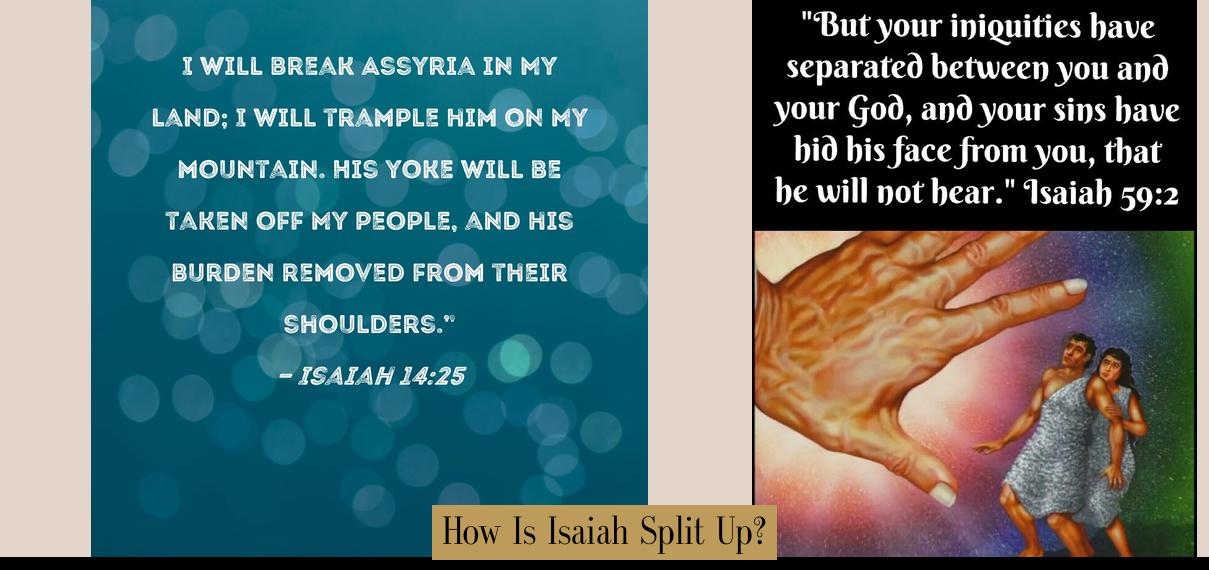How is Isaiah Split Up? A Deep Dive into the Divided Prophet
Ever heard of a book so epic, it had to be split in half? Well, buckle up, because we’re diving into the Book of Isaiah, a literary masterpiece that’s practically begging to be dissected.
The Short Answer: Isaiah, the book, is generally split into two sections: First Isaiah (chapters 1-39) and Deutero-Isaiah (chapters 40-66). It’s like a double feature at the movie theater, but with a lot more prophecy and a whole lot less popcorn.
Now, let’s get into the juicy details.
Imagine a book written over two centuries. That’s the Book of Isaiah in a nutshell. It’s a literary journey spanning the latter half of the 8th century BCE to the latter half of the 6th century BCE. It’s like a time capsule of prophecy, filled with warnings, promises, and enough poetic imagery to make a Shakespearean sonnet blush.
The Great Divide: A Tale of Two Isaiah’s
The reason scholars decided to split Isaiah into two main sections is rooted in the book’s unique structure and literary characteristics. It’s like trying to fit a square peg into a round hole – it just doesn’t quite work!
- First Isaiah (chapters 1-39): This section is attributed to the original Isaiah, the prophet himself. It’s chock-full of fiery sermons directed at the people of Judah, warning them about their impending doom due to their disobedience. It’s like a sermon from your most passionate, yet somewhat terrifying, preacher.
- Deutero-Isaiah (chapters 40-66): This section is believed to have been written by an anonymous author during the Babylonian exile (that’s when the Israelites were carted off to Babylon, for those of you who are just joining us). This section is far more hopeful, offering comfort and promises of restoration. It’s like a soothing voice after a storm, offering solace and a vision of a brighter future.
Why the Split? It’s All About the Tone and the Time
The two sections of Isaiah are like two distinct personalities within the same book. Think of it like a sitcom with a surprise twist. You’ve got your grumpy old neighbor, First Isaiah, throwing shade and delivering warnings. Then you’ve got the optimistic new neighbor, Deutero-Isaiah, spreading cheer and promising a brighter tomorrow.
Here’s a table to help you visualize the differences:
Isaiah: A Tale of Two Sections
| Section | Time Period | Tone | Key Themes |
|---|---|---|---|
| First Isaiah (chapters 1-39) | 8th century BCE | Judgmental, Warning | Judgement on Judah, God’s Holiness, Importance of Obedience |
| Deutero-Isaiah (chapters 40-66) | 6th century BCE (during the Babylonian Exile) | Hopeful, Consoling | God’s Comfort, Promise of Restoration, Coming Messiah |
A Third Isaiah? Just a Little Controversy
Hold your horses, there’s a little more to this story. Some scholars even propose a third section, Trito-Isaiah (chapters 56-66), arguing that some of these chapters have a distinct style and themes. This third section is like the wacky uncle at a family gathering, adding a unique flavor to the mix.
But, is it really necessary?
The truth is, the exact division of Isaiah is still a subject of scholarly debate. Some scholars argue that the book was written by a single author, while others believe in the multiple authorship theory.
So, what’s the takeaway?
The Book of Isaiah is a fascinating and complex literary work. Whether it’s two sections, three sections, or a single, unified vision, it’s a book that has captivated readers for centuries.
The beauty of the Book of Isaiah lies in its ability to resonate with us across time. Whether we’re facing judgment, exile, or simply the trials of everyday life, Isaiah offers a message of hope, reminding us that God’s love and mercy extend beyond our failings and into a future filled with redemption.
So, next time you’re feeling lost in the world, pick up the Book of Isaiah and let its words guide you. You never know, you might just find a little piece of hope and wisdom that speaks directly to your heart.
